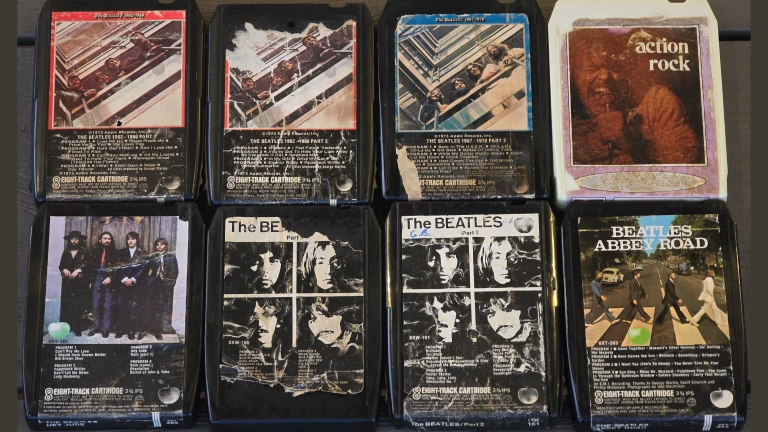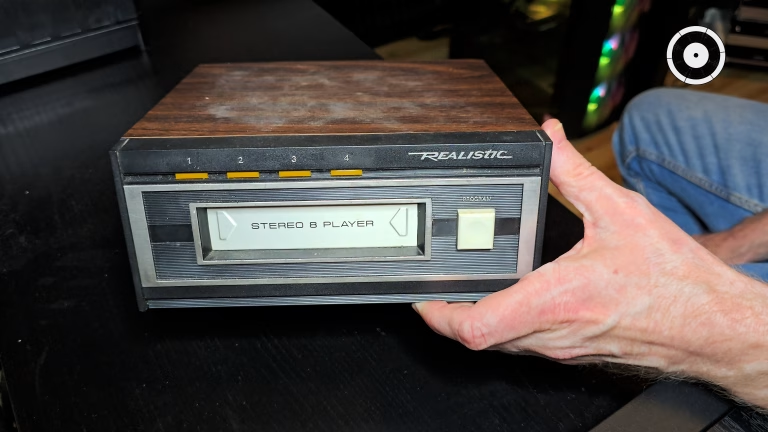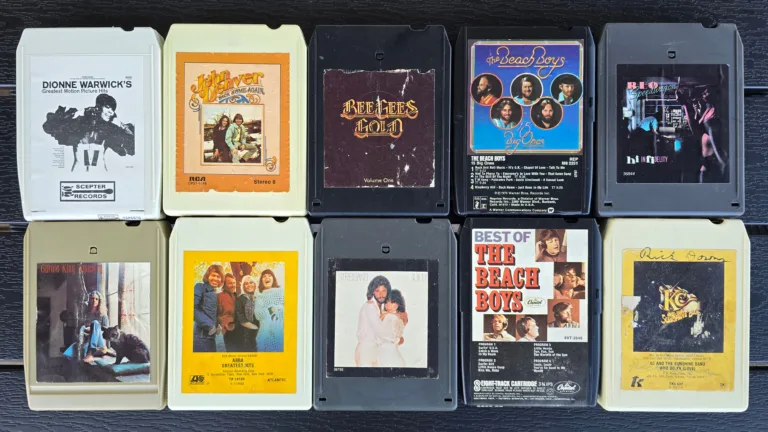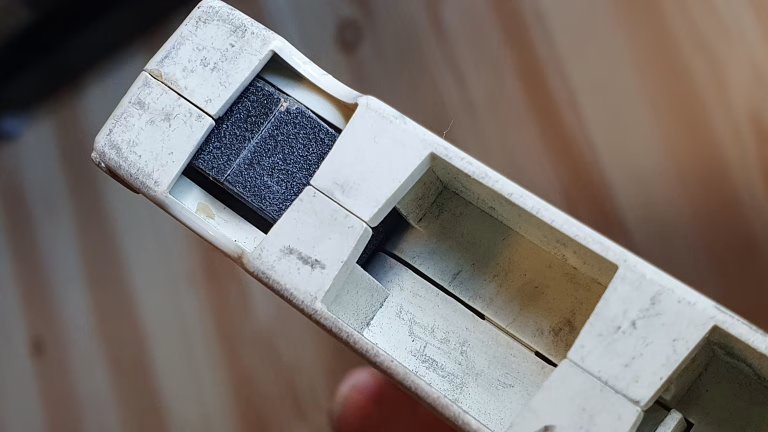How does the 8-track system work?
Here I will try to show how the 8-track system works and at the same time explain why proper adjustment of the sound head is so important to prevent the all-too-common problem of "sound contamination from neighboring tracks", the so-called "crosstalk problem".
What is a "track", and why are there 8 of them?
First, we need to clarify the difference between a “track” and a “program.” These terms are often used incorrectly. All too often, the word “track” is used where it would be more accurate to use the word “program.” For example, people might say something like, “My favorite song is on track 2.” To be correct, this is actually “PROGRAM 2,” which contains the material recorded on “TRACK 2” and “TRACK 6.”
To explain it a little better, I have created the animation below which shows how the tape is divided into 8 different tracks and 4 different programs. At the same time, you can see how the sound head moves up and down during playback of the different tracks and programs.
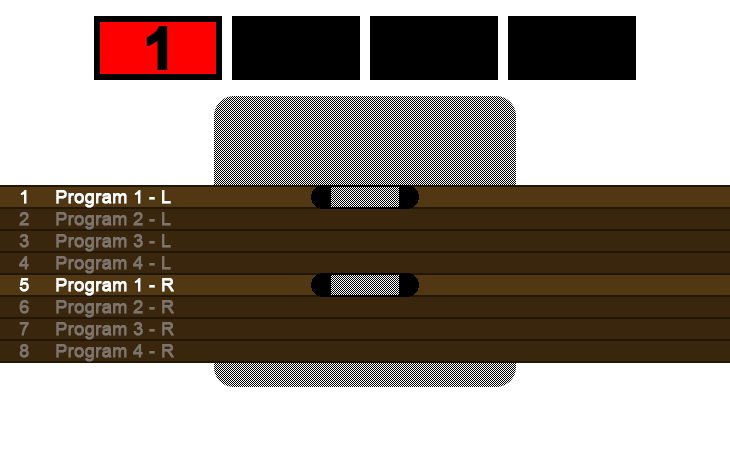
The illustration above shows how the grey sound head moves up and down the brown tape, playing two tracks simultaneously for each program being played. Pay particular attention to the hair-thin lines between each track. If the sound head is not aligned perfectly, you may experience "crosstalk".
The animation shows a stereo tape being played on an 8-track player while switching between Programs 1, 2, 3 and 4. The sound head has 2 small dots (or pickup elements), one for the left channel and one for the right channel. When one program has finished playing, there is a small metal tape on the tape that sends a signal to a sensor inside the player, triggering the track changer mechanism so that the player automatically switches to the next program.
All 8-track players also have a manual "program selector button" that you can use when you want to change programs manually. There are even players that do not have an automatic track changer function, but this is relatively uncommon.
Why are two tracks heard at the same time, so-called "crosstalk"?
Since the sound head moves up and down mechanically to the different tracks on the tape – and since these movements are quite abrupt and jerky – this causes wear on the mechanical parts of the players so that the sound head will sooner or later go out of alignment. This is usually due to wear on the small components that move the sound head, or it can be due to an all-too-common problem that the bracket that holds the sound head in place may be made of plastic that may have cracked. There are hundreds of different player models that used the fairly cheap Mitsumi tape transport where the infamous plastic bracket was used. I will come back to this in later articles where I will explain adjusting the sound head and show how a cracked plastic bracket can be repaired.

